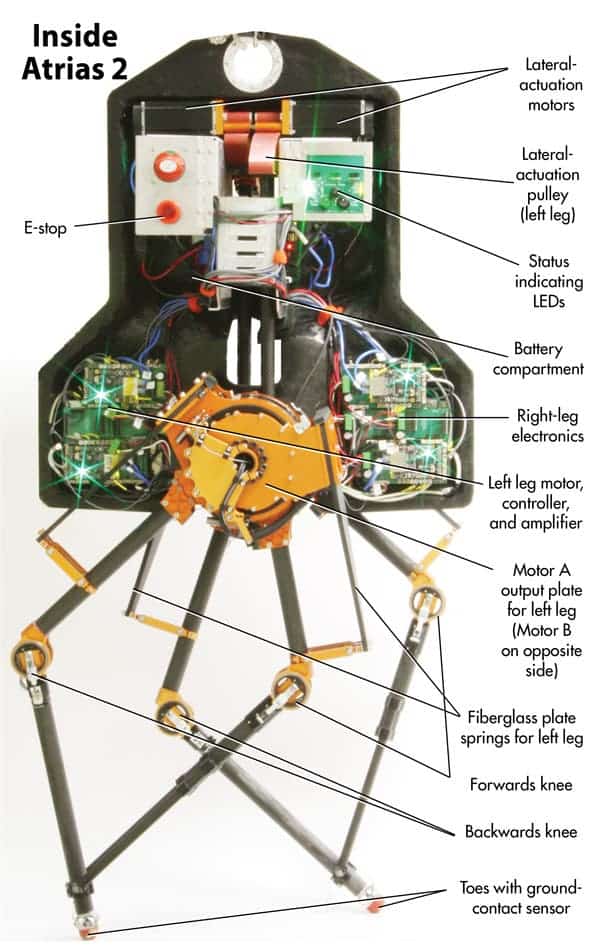The Defense Advanced Research Projects Agency (DARPA) has funded a project which promises to become the quickest two-legged robot in the world. Using technology inspired from pogo sticks, the robot could be useful for getting in and out of areas too dangerous for human rescuers.

ATRIAS or Assume The Robot Is A Sphere (name reference) is a bipedal robot created by Dynamic Robotics Laboratory researchers who drew inspiration from birds – arguably the most agile and certainly the quickest bipedal creatures on Earth. Most birds are digitigrade animals, which means that they walk on their toes, not the entire feet – and all their bones are perfectly suited for this type of walking. The legs are attached to a very strong assembly consisting of the pelvic girdle extensively fused with the uniform spinal bone (also specific to birds). But researchers didn’t want to mimic birds – they took it a step further.

“When this robot gets up to speed for walking, not even running yet, it will be the fastest bipedal robot in the world,” Jonathan Hurst, an associate professor and robotic expert in the OSU College of Engineering said.
In a way, the robot’s foot is half bird, half pogo stick.
“ATRIAS is designed to move like a simple ‘spring-mass’ model, a theoretical model which is comparable to a pogo stick. This springy model can both walk and run with remarkable energy economy and in a fashion highly similar to humans and other animals. By building ATRIAS like this model, we are targeting similar performance,” the Dynamic Robotics Laboratory website said.
The robot also has a spectacular sense of balance. In training, the robot has easily kept its balance while withstanding kicks, punches, and dodgeballs. While the team is still working on the robot, we’ll get the chance to see it in action quite soon. The OSU Atrias will participate in the DARPA Robotics Challenge set for June 5-6 in Pomona, Calif., the group announced.






